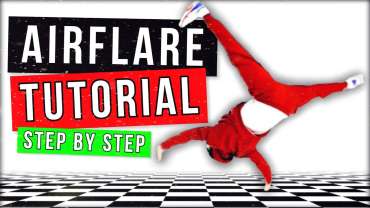In the world of breakdancing, learning basic footwork is really important for dancers. One of the most important moves is called the 6-step. It’s a fundamental part of breakdancing and helps dancers build their style and skill. In this article, we’ll talk about why the 6-step is so important, where it came from, different ways to do it, and how it has influenced breakdancing all over the world. Let’s explore the steps of the 6-step and see how it has shaped breakdance culture.
The 6-step is the fundamental way breakdancers do footwork. The dancer uses their arms to hold themselves up off the ground while their legs move in a circular motion.
What is a 6 step in breakdancing?
The 6-step is essential in breakdancing because it’s usually the first footwork sequence beginners learn, and it’s a central part of many dance routines. This move helps set the direction of movement and builds momentum while giving the dancer good control over their body. Staying low to the ground allows for easy transitions into other moves. Each of the six steps puts the body in a different position that can be used to start other moves. Steps 1/2 and 3/4 are commonly used to launch into different moves. Similarly, any move ending on the ground can smoothly transition back into the 6-step.
After step 2 and step 4, the body’s position mirrors each other. The 6-step typically involves looking straight ahead and placing the feet in the same spots with each rotation, but dancers can also face different directions with each turn.
Although the basic 6-step is like walking in a circle on the ground, there are many variations that can reverse the rotation direction, interlock limbs, include minor flares, twists, power moves, freezes, tweaks, and more.
Variants
Among the various 6-step variations, some have distinct, repeatable patterns similar to the 6-step itself, making them recognized footwork sequences. Here are a few notable ones:
5-Step
This is a simplified version of the 6-step. The difference is that the first two steps are combined into one. The dancer leaps into the second step with their front leg slightly more extended.
7-Step
Another simple variation of the 6-step. The first step is the same, but in the second step, the left leg steps over the right. Then, the right leg is kicked forward to a position halfway through the third step of the 6-step. After that, the right leg is brought back, and the fifth step continues.
Head Step
This variation of the 6-step involves the breaker using their head as a platform instead of their hands.
How to Start Breakdance – 6 STEP TUTORIAL
Welcome to a comprehensive tutorial on the foundational breakdancing move known as the 6 Step! Whether you’re a beginner or looking to refine your skills, mastering this essential footwork pattern will set a solid foundation for your breakdancing journey.
In this guide, we’ll break down the 6 Step into manageable steps, explore variations, and provide tips to help you progress effectively.
The 6 Step
The 6 Step is a fundamental breakdancing move that forms the basis of many other intricate footwork patterns. Let’s delve into how you can learn and execute this essential technique:
Step 1: Understanding the Basics
The 6 Step involves a series of coordinated movements performed in a circular motion. Here’s a breakdown:
- Starting Position: Begin in a crouched stance, with your weight evenly distributed.
- Initiate the Spin: Extend your left hand and left leg while spinning clockwise.
- Step 2: Move your right leg backward.
- Step 3: Follow by moving your left leg backward.
- Continuing the Spin: Lean your body slightly and swing your right leg in a wide arc, returning to the starting position.
- Mirrored Movement: Repeat the steps in reverse order, mirroring your movements.
Step 2: Practicing Technique
To execute the 6 Step effectively:
- Stay Relaxed: Keep your movements fluid and relaxed. Tension can hinder your flow.
- Focus on Form: Maintain a low stance with knees bent, ensuring wide leg movements.
- Practice Both Directions: Master the 6 Step clockwise and counterclockwise for versatility.
Step 3: Progression and Speed
- Start Slow: Begin at a slower pace to grasp each position and movement.
- Gradually Increase Speed: As you gain proficiency, aim to perform faster repetitions.
- Repetition is Key: Practice at least five to ten rounds per session to build muscle memory and speed.
6 Step Variations
Once you’ve mastered the basic 6 Step, explore these variations to add flair to your repertoire:
Variation 1: Tempo Changes
- Slow Motion: Perform the 6 Step in slow motion, emphasizing each position.
- Accelerated Pace: Increase the speed gradually to challenge yourself.
Variation 2: Directional Play
- Clockwise vs. Counterclockwise: Experiment with starting directions to enhance versatility.
- Mix and Match: Combine clockwise and counterclockwise movements seamlessly.
Variation 3: Artistic Flair
- Creative Transitions: Integrate spins, freezes, or directional changes between 6 Step sequences.
- Incorporate Music: Sync your movements with the rhythm to add musicality.
Outro
Congratulations on diving into the fundamentals of breakdancing with the 6 Step tutorial! Remember, practice and patience are key to mastering this dynamic dance form. Feel free to explore variations and develop your unique style.
For more breakdancing tutorials and tips, stay tuned for our next installment covering the 7 Step and its variations.
Now, it’s time to hit the dance floor and unleash your creativity. Keep breaking, keep grooving, and keep evolving as a breakdancer!
Keep spinning, keep stepping, keep dancing! 🕺
Author Profile
Latest entries
 Break DanceAugust 26, 2024ULTIMATE AIRFLARE TUTORIAL (2024) – COACH SAMBO
Break DanceAugust 26, 2024ULTIMATE AIRFLARE TUTORIAL (2024) – COACH SAMBO Break DanceAugust 26, 2024BEST WINDMILL TUTORIAL – COACH SAMBO – HOW TO BREAKDANCE
Break DanceAugust 26, 2024BEST WINDMILL TUTORIAL – COACH SAMBO – HOW TO BREAKDANCE Break DanceAugust 26, 2024BEST AIRFLARE TUTORIAL – BY SAMBO – HOW TO BREAKDANCE (#6)
Break DanceAugust 26, 2024BEST AIRFLARE TUTORIAL – BY SAMBO – HOW TO BREAKDANCE (#6) Break DanceAugust 26, 20245 BEGINNER FREEZES – HOW TO BREAKDANCE – BY COACH SAMBO
Break DanceAugust 26, 20245 BEGINNER FREEZES – HOW TO BREAKDANCE – BY COACH SAMBO






Leave a reply